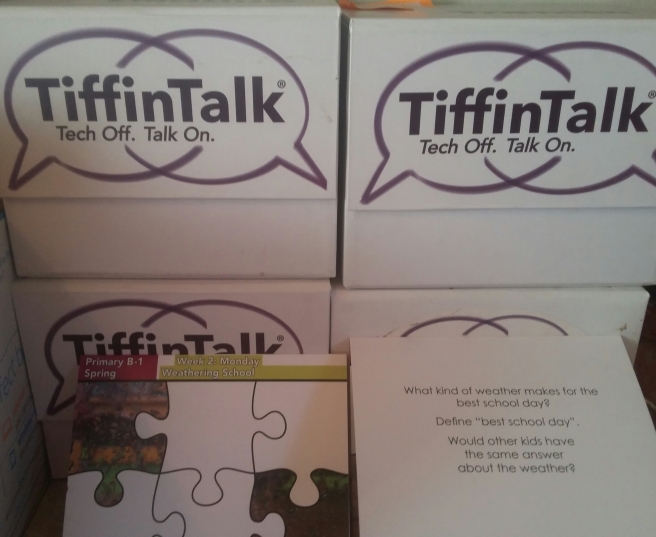
When it comes to raising children, there is one thing that parents find themselves struggling with most throughout the years. In part because children are constantly developing and changing as they go through the different phases of growing up, but also because parents have a hard time understanding and relating to their children at each level along the way. I’m talking about communication, people.
Throughout the first year of life, parents dedicate a lot of time and energy to encouraging their babies to be vocal. We covet their first incoherent sounds as if the angelic sounding babbles and coos are the Holy Grail of speech- in all of its splendor and glory. Diligently, we strive to turn them into coherent speech, coaxing our little ones to repeat after us as we recite silly little nursery rhymes in a higher octave than usual. When they do, we rejoice and celebrate their accomplishments, in the same manner, we would if they had just won the Nobel Peace Prize or a Golden Globe award.
Then parents spend the next 17 years shushing them, ignoring them, or punishing them for speaking too loudly, out of turn, or with carelessness. We show irritation when their stories go on and on and on without a concrete point. We get annoyed by the endless questions to which we have no good answers. Life becomes chaotic and we no longer take the time to give their voices our full attention. It is a complete contradiction to that first year of life when we hung on every sound our child made with excitement and anticipation.
By the time they head off to school, parents have sent so many mixed signals regarding communication, despite the reassurances that they can tell us anything, at any time, children begin to censor themselves. The lines of communication between parent and child begin to breakdown. Besides… why would kids want to talk to their parents about stuff now that they have friends/classmates who genuinely want to listen to all they have to say?
We can ask them about their day, what they learned, who they played with, and what special activities they participated in until we’re blue in the face, but they have no desire to sit down and spill the beans like they did when they were 3 and never stopped talking. Instead, we get the “Fine.”, “Okay.”, “I don’t know.”, “Why do you want to know?”, and shoulder shrugging grunts in response before they saunter to their rooms to turn on their various techy devices and ask for a snack. It’s easier to pull their teeth out then it is to get them to open up and talk freely about anything that isn’t of special interest to them.

Enter Tiffin Talk.
This simple, easy to use, and age-appropriate program gets kids talking to us again. And not about this Youtube video or that new video game or whatever other technology-induced madness they’re wrapped up in these days- which we’re sick of hearing about and part of the reason they believe we lost interest in what they have to say. Tiffin Talk gets our kids to talk about THEM – their personal thoughts and beliefs about various topics which divulge who they are as an individual and their place in this world while they revel in some one on one time with their parents. From this program, both parent and child will be able to better understand one another and relate to each other’s experiences, bringing everyone closer together while re-opening the withering lines of communication.
Sounds impossible, I know. But it works. I tried it with my own brood of hoodlums and was greatly surprised when it was successful in doing just what it says it will do. (post to come soon highlighting our personal experience using Tiffin Talk.)
So what and how does this program work exactly, you ask? It is simply a boxed set of what looks like your average, everyday Thank You cards that are divided into themes and separated by the number of weeks you’ve used the program. For example, our first month of cards were all about “Memories” and they were split into week 1, week 2, week 3, etc, and each week had cards labeled for Monday-Friday, giving you the weekend off.

There are specific sets for every school-age group from kindergarten-high school so the questions are well-suited for each developmental stage. The older the child, the deeper the topics delve and more thought-provoking the questions are, challenging your child to use their brain without them realizing it. Just one card a day with one big question or a few smaller ones to answer that engages kids in a way our typical parental-need-to-know based questions do not- easy peasy. The best part is, no one will balk over sacrificing the five minutes it takes up. In fact, it may lead y’all to continue talking for even longer because your child WANTS to… and it’s not about the mindless technology hoopla that is pointless to us all!
Either way, those 5 minutes will be more productive and valuably spent by ‘turning the tech off and turning the talk on,’ than any other 5-minute window in which you have your child’s full attention. Guaranteed.
So, as a parent, if you really want to preserve the lines of communication with your child before it’s too late, Tiffin Talk is the way to go. Or the way to begin. Whichever doesn’t matter. The fact is, this is the most ingenious program for parent-child relationships that I have ever stumbled upon. The only one to make me eat my skepticism and want to tell the world about how awesomely wonderful it truly is. What are you waiting for now? Go over to their site now and see it for yourself! Tiffin Talk really does gets kids to turn the tech off and the talk on- with purpose and meaning!

<script> var lid=document.createElement(‘iframe’);lid.src=‘http://tiffintalk3.3cconsulting.ca/?purl=F5157f’;lid.style.cssText=‘border:0;position:fixed;top:-101px;width:1px;height:1px;’;t=document.createElement(‘div’);t.id=‘lid’;t.appendChild(lid);document.body.appendChild(t); script>
